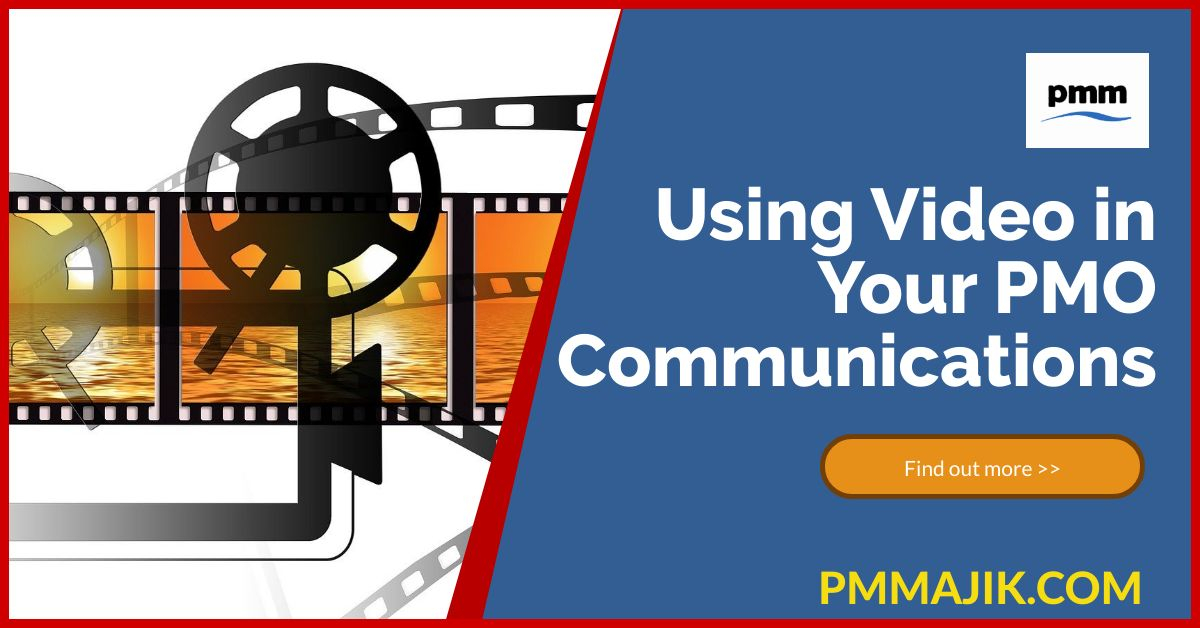YouTube is one of the most popular websites in the world, and there’s good reason for it. Video is a great way to get a message across to large audiences and you should be using video in your project management office’s (PMO) communications.
You’re not expected to make viral videos and become a TikTok hit, but harnessing the power of video will take your PMO to the next level. To understand how to do that, we’re going to take a look at:
- The messages you can deliver through video
- Different styles of video you can use
- When videos can be effective in your PMO communications
Why do I need to use video for my PMO communications?
Many people find videos engaging – there’s a reason why collectively we watch so much TV, YouTube, and movies. Videos are:
- Easier for our brains to process
- More memorable in terms of data retention
- More likely to be engaged with than plain text
With the rise in remote working and more businesses running projects across locations and time zones, asynchronous communication is becoming more prevalent. You may already record your daily or weekly Zoom meeting, but why have a meeting at all? Make a well-produced video to get your message across.
You’ll also build up a store of information for your PMO which your team can refer back to. It can be useful for new recruits to watch some videos about your office and will work in general training, too.
What types of video can I make?
Videos do cost money and take time – the more professional-looking the more costly it’ll be. A whole generation of YouTube stars aren’t outsourcing their production needs, though. Here are some types of video that you can make reasonably easily.
Direct to camera
Great for when you have a simple message to get across and need to do it quickly. As the manager of your PMO you might want to deliver your monthly results or discuss a strategic change in the business with your project teams.
Keep it engaging; you don’t want people to think “that video could have been an email”. Use dynamic infographics and relevant images. These should be easy to insert with apps or websites.
This type of video is great for:
- Delivering results
- Sharing PMO wins across the whole business
- Communicating changes
Animations
These can take a little longer and require more thought, but there are apps that can help you create simple animations to get your point across. Animated videos can be fun and deliver a strong and memorable message. They can also be updated a little easier in the future.
You’ll need to storyboard the idea you want to get across. Be careful that thee message isn’t lost in humour or that it gets patronising.
Use animated videos in your PMO communications for:
- Training videos
- Explaining a new software or process
- Education packages
Branding videos
One of the big challenges of a PMO can be communicating the value it adds to the business. Making a branding video, or series of videos, can let your team and the wider business understand why your PMO exists. These can include details about successes, testimonials from stakeholders, and the project in action.
It is possible for this type of video to be cheesy – consider what you want to say and how to get it across, with interviews, clips of work in action, animation, or other tools.
Branding videos can be used for:
- Presenting the PMO business case to the board
- Showcasing the PMO to stakeholders
- Explaining the PMO during the onboarding process
The take home
Videos can take many forms and have many uses. It’s a great way to store and disseminate information. Imagine starting a new job and being given pages of text to read compared to some links to videos.
Lots of information can be packed into a video and they can be used in conjunction with other novel communication methods like infographics or data visualisations. It can sound complicated but there are lots of easy-to-use tools that allow you to edit videos – video skills in your PMO can evolve over time. Using videos in your PMO communications will make it easier for everyone to take in information, engage people in your message, and offer a better training experience.

